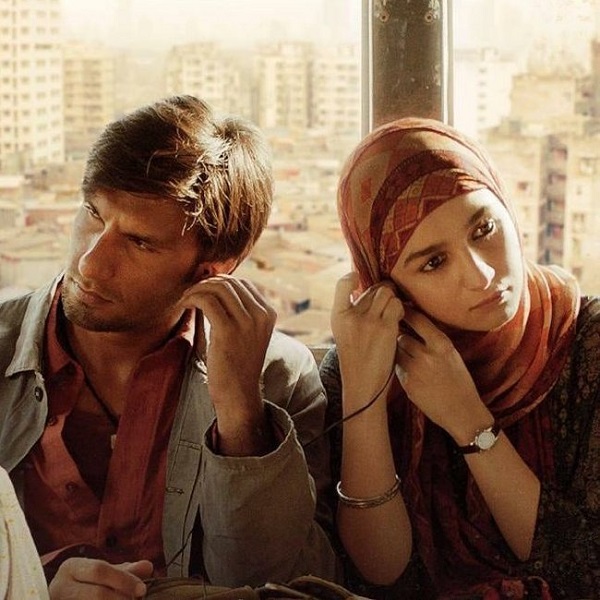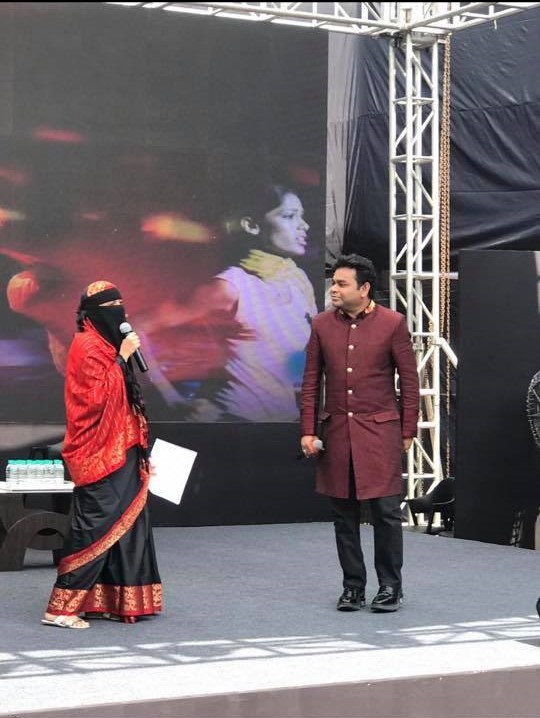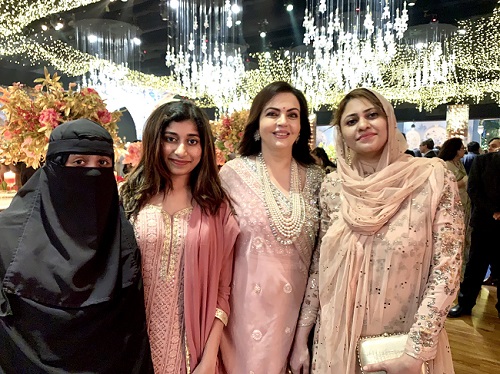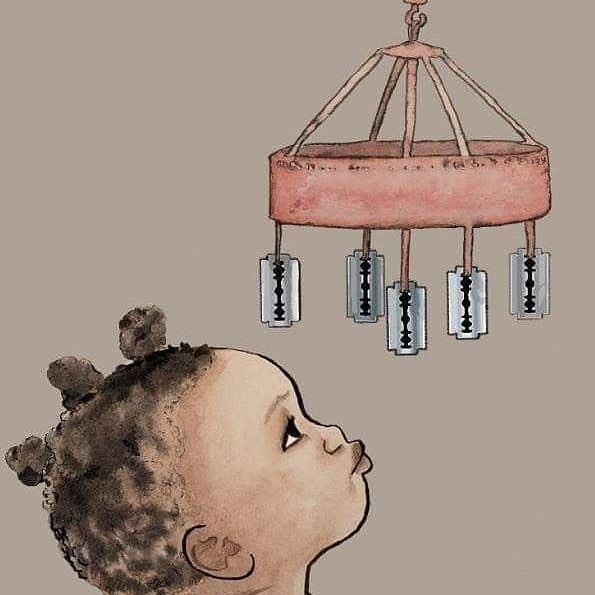
Film actors erroneously defend wearing a hijab as ‘freedom of choice’. If this ‘freedom’ to make a ‘choice’ becomes available only to privileged few and a select group of women in positions of power, then it no longer remains ‘choice’. Mullahs take a cue from the celebrities in Hijab, and create an ecosystem for institutional oppression of Muslim women.
India’s Hindi film industry, popularly known as Bollywood, has made remarkable progress in depicting women on screen over the years. Traditional depressive roles of women have been replaced by confident and independent women in movies such as Piku, Queen and Pink. However, Muslim women have been depicted in the same passive and helpless roles in majority of the Indian movies.
It would be fair to say that Bollywood has typically stereotyped Muslim women as a burqa-clad modest women who remains helpless and trapped in abusive relationships.
Depicting Muslim women in characters that show them covered from head to toe in so called ‘modest’ attire that represents a regressive ideology, is actually a disservice to its own image of being a diverse and progressive film industry.
The only progress that Bollywood seems to make in depicting Muslim women is that now they are portrayed as bold women in hijab, instead of the burqa clad “dukhee naari”(poor and depressed woman).
In reality, one needs to ask whether these stereotypes are true. In fact wearing “modest wear” such as a burqa or niqab is not the only thing that defines a Muslim woman’s identity.
The character of Safeena in the Bollywood’s latest release “Gully Boy” is a reaffirmation of these stereotypes. I am unable to understand that when a Muslim woman Safeena leads a mundane life like any other Indian girl in the movie, why her appearance is bound to be a reflection of her religious identity that is largely based on the fetishisation of modesty culture.
This is no secret that modesty, in conservative Muslim societies, is a regressive notion that mostly applies on women to keep them in man-made ordained roles.
It largely manifests itself through discriminatory traditions aimed to control women by denying their right to bodily autonomy. Mainly patriarchal norms and misogynistic traditions coupled with extremist interpretations of modesty rooted in religious orthodoxy perpetuate these discriminatory practices against women in such society.
The mindset that if a woman knows the pleasure she might go astray in the marriage or an uncovered woman might bring shame to the community is related to modesty and honour culture that provides justifications for invidious treatments of women.
It is so baked into this assumption that a woman’s body movements, style, shape and clothing are considered to have the potency to seduce ‘pious’ Muslim men and they deem to be solely responsible for instigating male sexual arousal.
Therefore, compulsory veiling, FGM (female genital mutilation) and other constraints on women are considered as divinely ordained solutions to save ‘pious’ men from committing sin.
Such regressive modesty culture that throws women under insufferable situations and makes children comply with such rigid and apathetic lifestyle is abomination which is often brushed under the carpet either to preserve the community standards or to avoid hurting Muslim sentiments.
In such situations, blatant display of piety and fetishisation of modesty culture by some privileged ones may eclipse the bitter prevalence of FGM (female genital mutilation), mandatory veiling and other discriminatory practices against women and children within the Muslim community.
Recently, famous Indian singer and composer A R Rahman was severely criticised for defending his daughter Khatija’s right to wear head to toe veil (niqab) that represents the same regressive culture of modesty in which women are treated as second class citizens.

I have been a big fan of A R Rahman, especially for courageously carving his way out of the Islamic orthodoxy that doesn’t recognise the ethical constraints outside of the religious discourse where many of his fellow believers tend to feel ordained to see certain social practices as a threat to their values such as considering music haram (impermissible) and a source of evil.
A R Rahman is loved and admired by millions of people around the world. His views and actions to reconcile music and faith have a deep impact on people’s understanding of different aspects of religion.
But I admit that, unfortunately, my jubilation for his resilience met with utter despair when he defended a regressive manifestation of “freedom of choice” for women knowing that such freedom has clearly no basis in the society he belongs to.
After receiving flak, he went on to post a family photo on social media, “The precious ladies of my family” to shun his critics by showing his daughter Khatija in burqa and his wife as well as another daughter without the full veil.

AR Rahman shared this photo on Twitter with the caption: “The precious ladies of my family Khatija ,Raheema and Sairaa with NitaAmbaniji. #freedomtochoose“
Regrettably, this photo displayed harmony between regressive and progressive values in the most farcical way that even bypasses veracity.
On the other hand, Khatija took this opportunity to show-off how she exercises her will, being covered from head to toe in an attire that is a hallmark of suppressive regimes such as Saudia Arabia and Iran and other hardliner communities.
Khatija posted on FaceBook, “I would like to say that the attire I wear or the choices I make in my life does not have anything to do with my parents. The veil has been my personal choice with complete acceptance and honour. I am a sane mature adult who knows to make my choices in life.”
It was bizarre to see her sanitising this modesty culture as a symbol of freedom of choice that paves the way for women’s exploitation in a superstitious society where privileged daughters like Khatija might have enjoyed the freedom of wearing a burqa but other women face death or violence at home for not doing the same thing.
This distortion of “freedom of choice” is deeply enmeshed and embedded in discriminatory practices which applies only on women in the name of modesty.
In reality, the right to make a choice has seldom been extended to Muslim women who have to conform not only to the religious orthodoxy but also to the imposed superstitious societal norms.
Her niqab reflected volumes about indoctrination within Indian Muslim community where a few years back a father killed his four year old girl by repeatedly thrashing her to the ground merely for failing to notice that her dupatta (headgear) had slipped off her head while having food with her mother. The little girl faced such brutality for deeming to be immodest in the eyes of her extremist father. Killing a child for not being enough modest is the level of sickness that festers within this so-called modesty culture.
Khatija, whether unwittingly or deliberately, chose to manifest modesty in a regressive way while brushing aside this deeply disturbing aspect of the oppressive tradition of veiling that reduces a woman’s integrity to being a merely sinful object. She may have been applauded for being outspoken as niqab-wearing independent Muslim woman but her appearance in niqab conveyed a misleading message that doesn’t resonate with the courageous Muslim women who are defying patriarchy at the risk of their lives in suppressive cultures.
It doesn’t represent helpless Indian women who are trying to escape the misogynistic mindset that implies, “women who don’t wear hijab properly are tempting men like cut watermelon on display.”
It no way corresponds to the brave women who stand up to the perpetual fear of being stranded by their husbands, who can divorce them merely by uttering ‘Talaaq’ three times. Neither has it seemed to help countless victims of FGM (female genital mutilation) who would be put through mutilation process in the name of honour in her own country.
It is offensively bizarre to even imagine how little girls from Muslim Bohra community are allured into dark rooms, pinned down and mutilated in the presence of their own loved ones. They cut off their clitoris considering it “haram ki boti” (source of sin). And this all happens in name of honour and modesty.

Unfortunately, it’s a bitter reality that cannot be ruled out since the practice of FGM is yet not considered a crime in India.
According to a survivor-led study, 97% FGM victims still remember how they had been put through painful mutilation process; the excruciating pain still haunts them. The report revealed that the practice of FGM (female genital mutilation) in Indian Bohra community remains unabated.
Ironically, Indian laws that recognise a system to protect women and girls do not deal with FGM offense. On the other hand, Rights activists have petitioned the highest Indian court to ban this practice which is lamentably still under consideration.
In such desperate situations, it has become a moral duty for all influential people in the society to put aside their privileges and exclusive rights for calling out the detrimental aspects of this culture on behalf of people suffering in silence.
Therefore, it is highly disingenuous to say that A R Rahman was trolled on social media as his daughter merely wore niqab or Alia Bhatt faced criticism for merely donning hijab in her movie “Gully Boy”. Since this attire doesn’t represent modesty as a virtue for women, it rather embodies all radical edicts given by extremist Mullahs which are uniformly oppressive for Muslim women.
Conspicuously, this potential for intolerance lies in the systemic and institutional oppression of women which is endemic under the banner of modesty culture that perpetuates rape culture, FGM (female genital mutilation), honour killing, and all other forms of discrimination against women, even to the point of violence.
Above all, one must not forget that when freedom to make a choice becomes perquisite for some selected women then it is no more a choice. It is merely a privilege that is meted out to some selected women under thinly disguised patriarchate.

Very nice write up. Continue to write more excellent articles.
Alia bhatt is looking so innocent in hijab. she is really beautiful.
Wearing niqaab and burqah is a personal choice and should not be opperresed by anyone as this done for the sake of Almighty Allah but not to please anyone